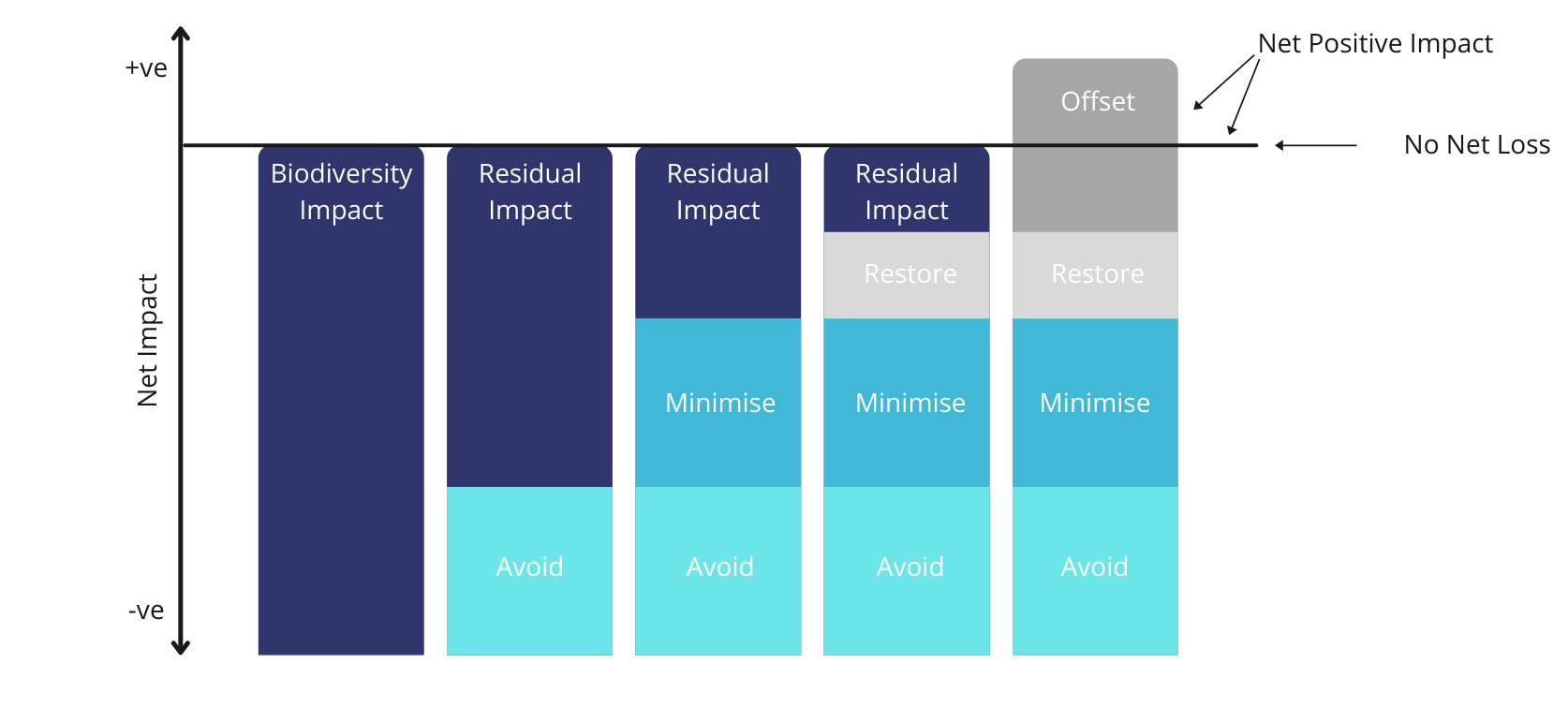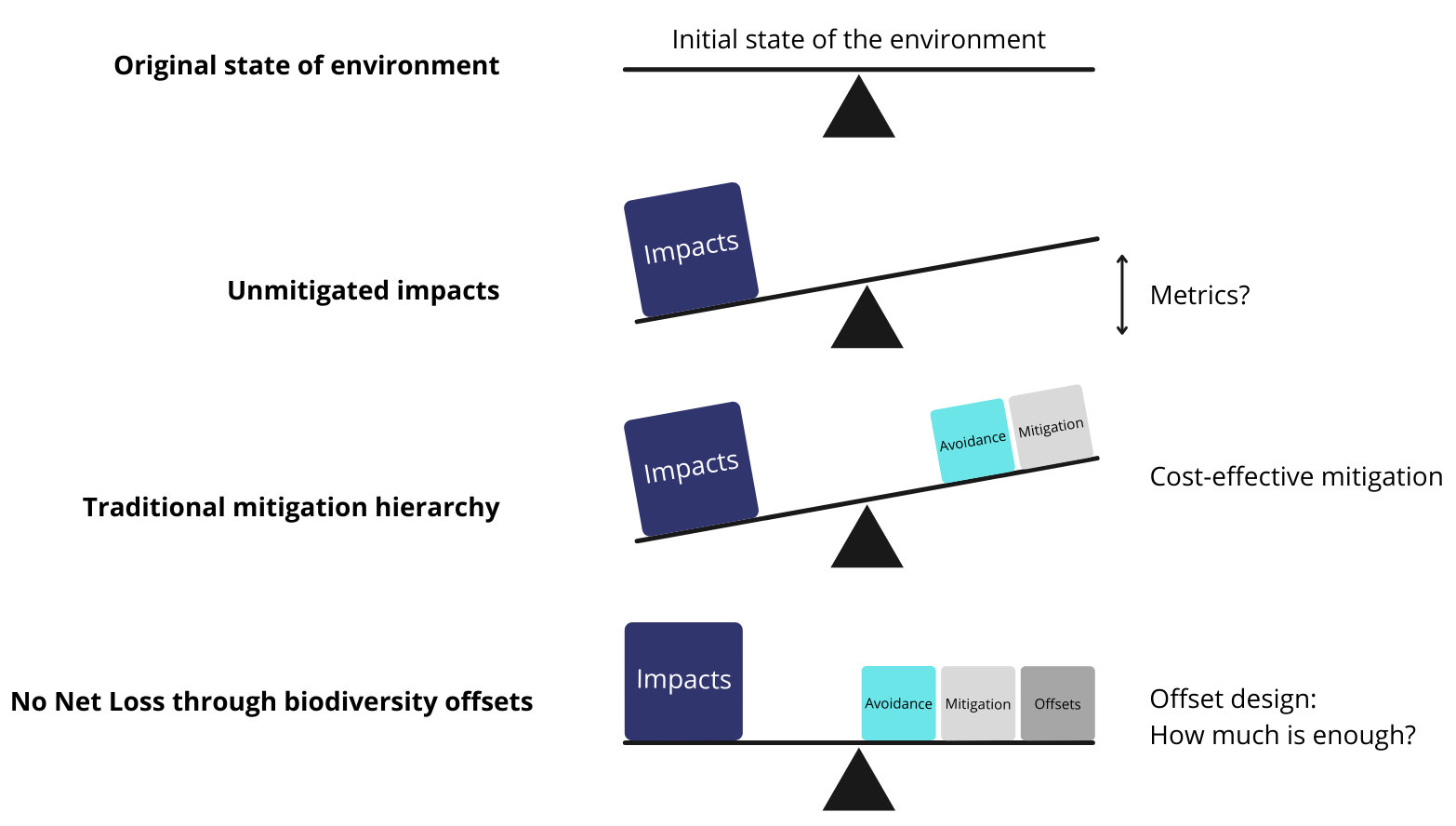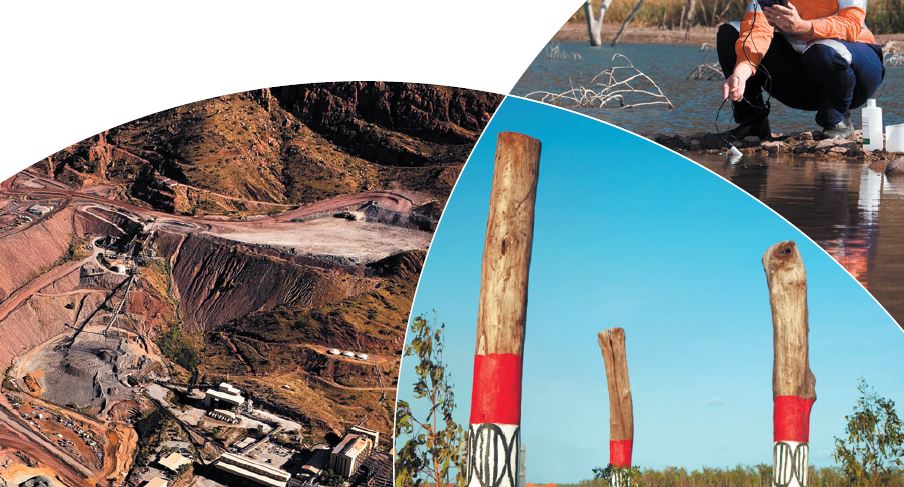Mitigation hierarchy
Net positive and the Mitigation Hierarchy
The mitigation hierarchy is a widely used tool that guides users towards limiting as far as possible the negative impacts on biodiversity from development projects. It emphasises best-practice of avoiding and minimising any negative impacts, and then restoring sites no longer used by a project, before finally considering offsetting residual impacts.
Following the hierarchy is crucial for all development projects aiming to achieve no overall negative impact on biodiversity or on balance, a net gain – also referred to as no net loss and the net positive approach, respectively. It is based on a series of essential, sequential – but iterative – steps taken throughout the project’s life cycle in order to limit any negative impacts on biodiversity.
We wrote a cross-sector guide for implementing the Mitigation Hierarchy on behalf of CSBI, which provides practical guidance, innovative approaches and examples to support implementation. The publication is aimed at environmental professionals working in, or with, extractive industries and financial institutions, who are responsible for overseeing the application of the mitigation hierarchy to biodiversity conservation, while balancing conservation needs with development priorities. Many of the core principles included in the guide are broadly applicable across multiple other sectors.

Sequential steps of the mitigation hierarchy
- Avoidance: the first step of the mitigation hierarchy comprises measures taken to avoid creating impacts from the outset, such as careful spatial placement of infrastructure, or timing construction sensitively to avoid or disturbance. Examples include the placement of roads outside of rare habitats or key species’ breeding grounds, or timing of seismic operations when aggregations of whales are not present. Avoidance is often the easiest, cheapest and most effective way of reducing potential negative impacts, but it requires biodiversity to be considered in the early stages of a project.
- Minimisation: these are measures taken to reduce the duration, intensity and/or extent of impacts that cannot be completely avoided. Effective minimisation can eliminate some negative impacts, such as measures to reduce noise and pollution, designing powerlines to reduce the likelihood of bird electrocutions, or building wildlife crossings on roads.
- Rehabilitation/restoration: The aim of this step is to improve degraded or removed ecosystems following exposure to impacts that cannot be completely avoided or minimised. Restoration tries to return an area to the original ecosystem that was present before impacts, whereas rehabilitation only aims to restore basic ecological functions and/or ecosystem services – such as through planting trees to stabilise bare soil. Rehabilitation and restoration are frequently needed towards the end of a project’s life cycle but may be possible in some areas during operation.
Collectively, avoidance, minimisation and rehabilitation/restoration serve to reduce, as far as possible, the residual impacts that a project has on biodiversity. Typically, however, even after their effective application, additional steps will be required to achieve no overall negative impact or a net gain for biodiversity.
- Offset: offsetting aims to compensate for any residual, adverse impacts after full implementation of the previous three steps of the mitigation hierarchy. Biodiversity offsets are of two main types: ‘restoration offsets’ which aim to rehabilitate or restore degraded habitat, and ‘averted loss offsets’ which aim to reduce or stop biodiversity loss in areas where this is predicted. Offsets are often complex and expensive, so attention to earlier steps in the mitigation hierarchy is usually preferable.
Supporting Conservation Actions: measures taken which have positive – but difficult to quantify – effects on biodiversity. These qualitative outcomes do not fit easily into the mitigation hierarchy, but may provide crucial support to mitigation actions. For example, awareness activities may encourage changes in government policy that are necessary for implementation of novel mitigation, research on threatened species may be essential to designing effective minimisation measures, or capacity building might be necessary for local stakeholders to engage with biodiversity offset implementation.


Practical guidance, innovative approaches and examples to support operationalising the mitigation hierarchy effectively. CSBI’s guide prepared by TBC was written with input from technical specialists in impact assessment, extractive industry experts and financial institutions, with feedback and input from the non-profit sector.
